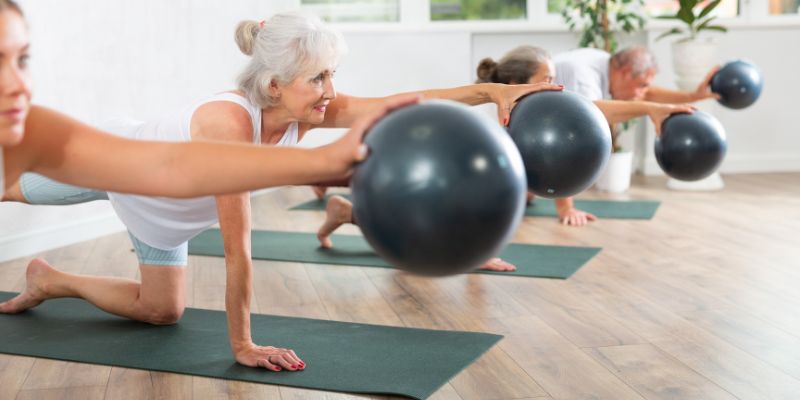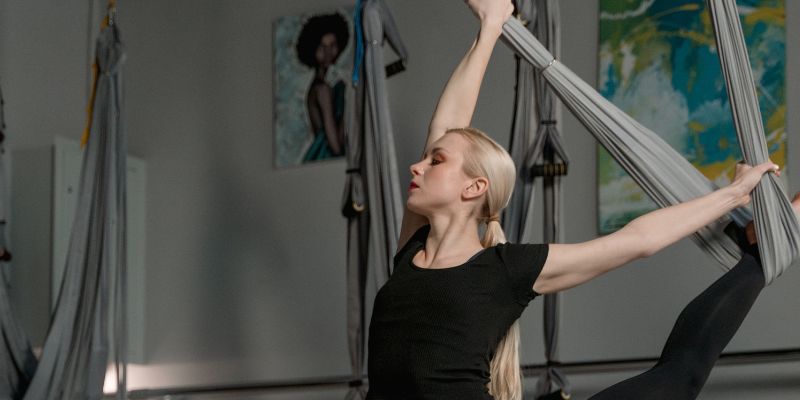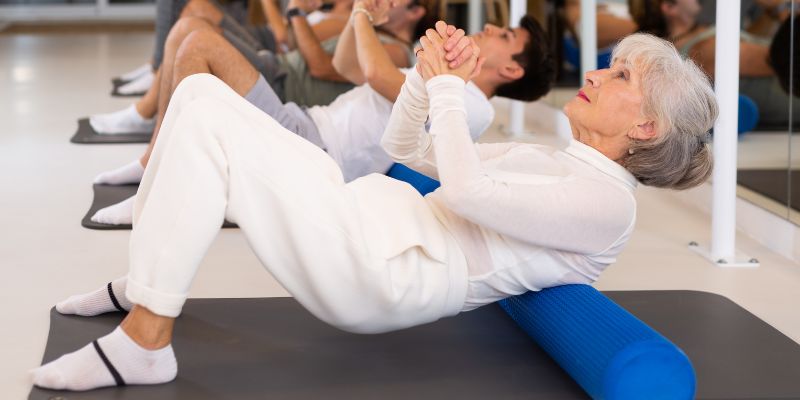Pilates is a popular low-impact workout that emphasizes strengthening core muscles, increasing flexibility, and correcting posture. It is designed to balance the body and mind through deliberate motions. This early 20th-century Joseph Pilates exercise Pilates, first used for recovery, has evolved into a popular exercise for beginners and athletes.
Pilates is a complete exercise method that emphasizes appropriate breathing, muscle control, and body alignment. It can be practiced on mats or specifically designed equipment. This article will review Pilates's definitions, its many health advantages, and why it could be the ideal exercise for you.

What is Pilates?
Pilates is a method of full-body exercises stressing controlled motions. Joseph Pilates developed it during the 1920s to aid in injury recovery and enhance physical conditioning. To strengthen the body's core muscleswhich comprise the abdominal, lower back, and pelvic musclesthe Pilates approach. Unlike high-impact workouts, Pilates consists of low-impact movements performed on a mat or with equipment such as reformers and resistance bands. Its focus on controlled breathing, alignment, and accuracy sets it apart from other exercise regimens.
Pilates is based on one of the fundamental ideas: attentive movement. Every exercise is meant to raise body awareness, enabling people to engage muscles better and control their motions. From beginners to advanced practitioners, Pilates is appropriate for all fitness levels and may be altered to fit particular requirements, so offering a flexible and readily available exercise.
Key Benefits of Pilates for Health
Pilates has several health advantages that transcend mere physical strength. Low-impact exercise for core strength is one main advantage. Targeting the deep abdominal muscles, which support the spine and increase general stability, the full-body workout for improved posture and lower risk of back discomfort follows from this. Still, another significant advantage of Pilates is flexibility. Practitioners can improve their range of motion by using several stretching and lengthening activities. Those with stiff muscles or trying to increase mobility find this helpful.
Pilates also helps with coordination and balance. It enables you to become more conscious of your body to prevent injury and move more elegantly. Pilates also promotes correct breathing methods, which can assist in lowering tension and boosting relaxation. Other health gains include improved muscle tone, mental clarity, and circulation. Pilates is a complete exercise approach since it helps enhance physical and psychological health.

How Pilates Strengthens the Core?
Pilates' cornerstone is the core. Its moves originate from this center portion of the body, comprising the muscles of the belly, lower back, hips, and pelvis. Core strength is required to maintain balance, stability, and general body functioning.
Pilates works the core primarily by stimulating the deep abdominal musclesincluding the pelvic floor muscles and the transverse abdominiswhich strengthens them. Although sometimes neglected in conventional exercises, these muscles are essential for supporting the spine and preserving proper posture.
Pilates movements also target the lower back muscles and obliques, strengthening a more balanced core. Fundamental Pilates exercises like the "Hundred" and "Plank" help engage these muscles through controlled breathing and exact motions. Strengthening the core lowers the chance of injury in daily tasks, thus improving physical performance.
Pilates vs. Other Workouts
Pilates distinguishes itself from other exercises by stressing accuracy and control. Pilates is about regulated, low-impact exercises targeted at particular muscle areas, while many fitness programs stress high-intensity motions or heavy weightlifting. Pilates works the whole body, unlike conventional strength training, which separates muscles. With an eye toward the core mainly, every exercise is meant to work many muscles at once. This all-body involvement increases physical endurance, flexibility, and balance.
Pilates is less on the joints than cardio-heavy activities like cycling or jogging. Pilates's low-impact character qualifies it for those healing from injuries or those with joint problems. It also makes more customizing possible since every exercise may be changed depending on personal demand. Pilates is also an excellent choice for those trying to lower stress while increasing their general health since it emphasizes conscious movement and breathing.
Types of Pilates: Mat vs. Equipment-Based
Pilates can be done with specialist equipment or on a mat. Though their intensity and emphasis differ, both forms have the same basic ideas.
- Mat Pilates: consists of mat-based workouts with body weight as resistance. It is a fantastic approach to developing control, flexibility, and strength without equipment. One can do Mat Pilates at home or in a studio; it is readily available. This mat pilates health benefits for flexibility and core strength.
- Equipment-based Pilates: uses reformers, Cadillac, and Wunda Chair, among other machinery. These devices vary and increase the intensity of the exercise by using springs as resistance. Based on equipment, Pilates lets people progress in their practice by allowing more targeted, under-controlled motions. Both forms of Pilates are beneficial; your choice will rely on your preferred level of exercise and goals.
Mental Health Benefits of Pilates
Pilates advances mental wellness in addition to physical fitness. Pilates is mainly based on breath control and mindfulness, which can help lower anxiety and tension using their application. The technique helps to relax the mind and increase mental focus by requiring body awareness and attention. It gives you a more optimistic attitude through better control over your body and ideas.
One excellent approach to controlling tension is Pilates. The deep, deliberate breathing techniques can help trigger the body's relaxation response, lowering cortisol levels and encouraging calm. Pilates also promotes a mind-body connection. Like meditation, practitioners can become more present in the moment by emphasizing exact motions. With time, this can enhance general mental health and better emotional control.
Conclusion:
A flexible, low-impact workout tool with many advantages for body and mind is Pilates. Pilates is a perfect exercise for people of all fitness levels, from strengthening the core and increasing flexibility to improving mental clarity and lowering stress. Whether you utilize specialist equipment or perform mat-based Pilates, the controlled motions and deliberate approach make this a great full-body exercise. Pilates is an excellent tool for long-term health and fitness since it helps you to improve posture, lower discomfort, and strengthen the mind-body connection.







